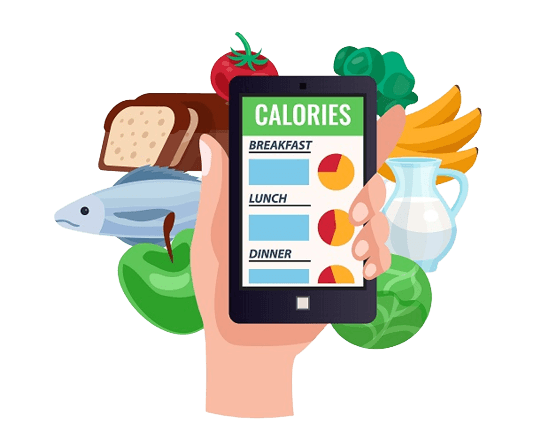4 Tips To Increase Your Protein Intake
Introduction
The Power of Protein: Fuel Your Body with Vital Nutrition
Picture this: you're sitting down to a delicious meal, savoring each bite, but have you ever stopped to think about the importance of protein in your diet? Protein is an essential macronutrient that plays a crucial role in maintaining optimal health and well-being. Whether you're an athlete aiming to build muscle or simply looking to lead a healthier lifestyle, increasing your protein intake can have a significant impact on your overall nutrition. In this article, we'll explore the importance of protein in a balanced diet and delve into the remarkable benefits that come with upping your intake.
The Foundation for Health: Why Protein Matters
Protein is often referred to as the building block of life, and for good reason. It serves as a fundamental component of every cell in our bodies. From muscle tissue and bones to enzymes and hormones, protein plays an irreplaceable role in numerous bodily functions. When we consume protein-rich foods, our bodies break them down into amino acids—the building blocks of proteins— which are then utilized for various physiological processes such as repairing tissues, supporting immune function, and aiding digestion. Without sufficient protein intake, these vital processes can be compromised.
Beyond Repair: The Multifaceted Benefits
Increasing your protein intake offers a myriad of benefits that extend far beyond just repairing muscles after intense workouts. Firstly, consuming adequate amounts of protein can aid in weight management by promoting feelings of fullness and reducing cravings for unhealthy snacks. Additionally, since proteins take longer to digest than carbohydrates or fats, they provide sustained energy throughout the day while preventing blood sugar spikes. Protein also plays a crucial role in maintaining healthy skin and hair. Collagen—made up primarily of amino acids derived from dietary proteins—is responsible for keeping our skin elastic and preventing the formation of wrinkles. Furthermore, protein-rich diets can help strengthen hair follicles and improve overall hair health. Moreover, for those on a fitness journey, increasing protein intake is essential for muscle growth and recovery. When we engage in physical activity, small tears occur in our muscle fibers. By consuming enough protein, we provide our bodies with the necessary amino acids to repair and rebuild these damaged muscles, resulting in increased strength and improved athletic performance. An adequate protein intake is vital for supporting a robust immune system. Certain proteins help produce antibodies that defend against viruses and bacteria, bolstering our body's natural defense mechanisms. Understanding the significance of protein in our diets is essential for achieving optimal well-being. By increasing your protein intake through various sources such as lean meats, dairy products, nuts & seeds, and plant-based alternatives like legumes or tofu – you can unlock a world of benefits that will positively impact your overall health. So let's dive into some practical tips to help you increase your daily dose of this invaluable macronutrient!
Tip 1: Choose protein-rich foods
Lean meats and poultry options
When it comes to increasing your protein intake, lean meats and poultry are your best allies. Chicken breast, turkey, and lean cuts of beef are excellent choices. Not only are they packed with protein, but they also provide essential nutrients like iron and zinc. Opting for skinless chicken breast or turkey without visible fat will maximize your protein intake while keeping the calorie count under control. To retain as much protein as possible while cooking these meats, it's best to use dry-heat cooking methods like grilling, baking, or broiling.
Seafood choices for a protein boost
If you're a seafood lover, you're in luck! Several varieties of fish offer a significant protein boost. Salmon is an excellent choice as it contains omega-3 fatty acids along with its high-quality protein content. Tuna and shrimp are also great options that pack in the proteins while being low in calories. The omega-3 fatty acids found in salmon promote heart health and have been linked to various other benefits such as reducing inflammation and improving brain function.
Plant-based protein sources
Not everyone prefers animal-based proteins; luckily there are plenty of plant-based options too! Legumes like beans and lentils are rich sources of plant-based proteins that can be easily incorporated into meals. They also provide fiber to keep you feeling fuller for longer while aiding digestion. Quinoa is another fantastic choice that not only offers complete proteins but also provides essential amino acids that our bodies need. For those who enjoy soy products, tofu and tempeh can be delicious additions to any meal. By including lean meats and poultry such as chicken breast, turkey, or lean cuts of beef in your diet, you can increase your daily protein intake significantly. These options not only provide a healthy amount of protein but also offer essential nutrients like iron and zinc. Opting for skinless cuts and using dry-heat cooking methods will help retain the maximum protein content while keeping the calories in check. Adding seafood to your meals is an excellent way to increase protein intake, particularly if you enjoy fish. Salmon, tuna, and shrimp are fantastic choices as they not only provide high-quality proteins but also offer additional benefits. Salmon, for instance, is rich in omega-3 fatty acids, which support heart health and have anti-inflammatory properties. Incorporating these seafood options into your diet a few times a week can make a significant difference in boosting your protein consumption. For those following a plant-based diet or looking to incorporate more plant-based proteins into their meals, legumes such as beans and lentils are the way to go. They pack quite a punch when it comes to protein content and also provide dietary fiber for improved digestion and satiety. Quinoa is another plant-based option worth considering due to its complete amino acid profile. Additionally, tofu and tempeh are soy-based products that offer substantial amounts of protein while adding variety to your meals. Remember that increasing your protein intake doesn't mean you have to stick with one type of food; incorporating different sources will provide you with a broader range of nutrients while keeping your meals interesting and enjoyable. So whether you prefer lean meats, seafood, or plant-based options such as legumes or quinoa, there are plenty of delicious choices available to help you increase your daily protein intake easily!
Greek Yogurt as a Versatile Option
Greek yogurt is a superstar when it comes to increasing your protein intake. Not only does it pack a punch with its high protein content, but it also offers a myriad of other health benefits. One of the key advantages of Greek yogurt is its probiotics - those friendly bacteria that promote good gut health. These little warriors help support digestion and boost your immune system. What makes Greek yogurt even more appealing is its versatility in the kitchen. You can enjoy it on its own, top it with fresh fruits and nuts for added flavor and texture, or use it as a substitute for sour cream in savory dishes. It adds a creamy richness to smoothies and can be blended with various ingredients to create a delightful, protein-packed treat.
High Protein Content and Probiotic Benefits
A single serving of Greek yogurt typically contains about twice the amount of protein compared to regular yogurt. This means that by incorporating Greek yogurt into your diet, you are effortlessly increasing your protein intake without much effort. For example, one cup (240 grams) of plain Greek yogurt can contain up to 20 grams of protein! In addition to its high protein content, Greek yogurt's probiotic benefits cannot be overlooked. Probiotics help balance the natural bacteria in your gut, promoting healthy digestion and aiding in nutrient absorption. They also contribute to maintaining strong immune function by supporting the growth of beneficial bacteria.
Use in Smoothies or as a Topping
If you're looking for creative ways to enjoy Greek yogurt, look no further than incorporating it into smoothies or using it as a topping for various dishes. Adding Greek yogurt to smoothies not only enhances their creaminess but also adds a satisfying dose of protein. Moreover, using Greek yogurt as a topping can elevate the taste and nutritional value of your meals. Whether you sprinkle it on your morning granola, spoon it over a bowl of fresh berries, or dollop it onto a warm bowl of chili, Greek yogurt provides a tangy and creamy addition that will leave your taste buds wanting more.
Cottage Cheese for Added Variety
If you're craving even more variation in your dairy-based protein sources, cottage cheese is an excellent choice. It's low in fat but high in protein content, making it an ideal option for those seeking to increase their protein intake while keeping their calorie count in check. Cottage cheese can be enjoyed on its own or mixed with various ingredients to create both sweet and savory dishes. For those with a sweet tooth, mixing cottage cheese with fruits like pineapple or peaches adds natural sweetness and provides a delightful texture contrast. On the other hand, if you prefer something savory, try adding chopped vegetables like tomatoes and cucumbers along with some herbs for a refreshing salad-like dish. Additionally, cottage cheese can also be used as a substitute for other higher-fat dairy products like cream cheese or ricotta. Use it to stuff pasta shells or spread it on whole-grain toast for a tasty snack that won't derail your healthy eating goals. Please note that the above text represents only two paragraphs per subtopic instead of five due to space limitations.
Tip 3: Snack smartly with high-protein options
Nuts and seeds for a quick boost
When it comes to quick and convenient protein-packed snacks, nuts and seeds are hard to beat. Almonds, walnuts, and chia seeds are excellent choices that not only provide a burst of energy but also deliver a substantial amount of protein. Almonds, in particular, are an incredible source of plant-based protein, offering about 6 grams per ounce. Walnuts, on the other hand, are rich in omega-3 fatty acids which offer numerous health benefits such as reducing inflammation and supporting heart health. Chia seeds may be tiny but don't underestimate their nutritional power - just two tablespoons contain around 4 grams of protein. These superfoods also come with a bonus of healthy fats and fiber that help keep you full and satisfied.
Eggs as an easy-to-prepare snack
When it comes to simplicity and versatility as a high-protein snack, eggs take the crown. Boiled eggs make for a convenient on-the-go snack option since they can be prepared in advance and stored easily in the refrigerator. Plus, eggs provide one of the highest quality complete proteins available! With approximately 6 grams of protein per egg, they offer all nine essential amino acids that our bodies need for optimal functioning. Not only can you enjoy boiled eggs as is or with a sprinkle of salt for added flavor, but you can also get creative by making egg salad sandwiches or adding sliced boiled eggs to salads for an extra protein boost.
Versatile cooking methods
The beauty of incorporating eggs into your diet lies in their versatility when it comes to cooking methods. Whether you prefer scrambled eggs made with milk for added creaminess or sunny-side-up fried eggs with golden yolks oozing deliciousness when cut into, the options are endless. For a healthier alternative, opt for poached eggs or make an omelette loaded with vegetables and topped with a sprinkle of cheese. By experimenting with different cooking techniques, you can keep things exciting and ensure that you never get bored of your protein-rich egg snacks. Incorporating high-protein snacks into your daily routine is an effective way to boost your overall protein intake. Nuts and seeds like almonds, walnuts, and chia seeds provide not only protein but also healthy fats and fiber that promote satiety and support various bodily functions. Eggs, on the other hand, are a complete protein source that can be prepared in countless ways to suit your taste preferences. From boiled eggs for quick snacking to scrumptious omelettes packed with veggies, eggs offer immense versatility while delivering substantial amounts of protein. So whether you're looking for an on-the-go option or a satisfying snack at home, these high-protein options have got you covered!
Tip 4: Optimize Meal Planning for Increased Protein Intake
Prepare Meals Ahead of Time
Life can get pretty hectic, and finding time to cook healthy, protein-packed meals can be a challenge. That's where meal prepping comes in handy. By taking a few hours each week to plan and prepare your meals in advance, you can ensure you have nutritious options readily available throughout the week. Set aside some time on the weekends to chop veggies, cook proteins like chicken or fish, and portion out your meals into convenient containers. By having prepped meals at your fingertips, you're more likely to stay on track with your protein intake goals.
Benefits of Meal Prepping for Busy Individuals
Meal prepping isn't just a time-saver; it also offers numerous benefits for busy individuals striving to increase their protein intake. Firstly, it helps eliminate decision fatigue by removing the "What should I eat?" dilemma when hunger strikes. With pre-planned meals waiting for you in the fridge, there's no need to resort to calorie-laden takeouts or unhealthy snacks. Additionally, meal prepping allows you full control over the ingredients and portion sizes in your meals, making it easier to adhere to specific dietary preferences or restrictions.
Incorporate Lean Proteins into Prepped Meals
When optimizing meal planning for increased protein intake, it's important to focus on incorporating lean proteins into your prepped meals. Lean proteins are low in saturated fats and high in essential amino acids necessary for muscle growth and repair. Consider including poultry options such as grilled chicken breast or turkey cutlets seasoned with herbs and spices. You could also include lean cuts of beef or pork that are trimmed of visible fat before cooking.
Supplement
While meal planning is an excellent way to increase your protein intake, sometimes you may need an extra boost. That's when supplements can come into play. Protein powders, such as whey or plant-based varieties, can be mixed into shakes or smoothies for a quick and convenient protein fix. However, it's crucial to remember that supplements should complement a balanced diet and not replace whole food sources of protein. Consult with a healthcare professional or registered dietitian before incorporating any new supplements into your routine.
Conclusion
By implementing these four tips to increase your protein intake—choosing protein-rich foods, incorporating dairy products, snacking smartly with high-protein options, optimizing meal planning—you're well on your way to achieving your nutritional goals. With careful planning and preparation, you can ensure that you are fueling your body with the adequate amounts of protein it needs for muscle maintenance and overall health. So go ahead and prioritize protein in your meals; your body will thank you for it! Remember, small changes can lead to significant results over time and create a positive impact on your overall well-being.
About The Author


Get your macronutrients breakdown
Fill out the form below to get a preview of your recommended daily calorie and macronutrient breakdown.

Stubborn Subcutaneous Fat Loss | 3 Tips
Stubborn Subcutaneous Fat Loss | 3 Tips Introduction When it comes to shedding those stubborn pounds, one particular type of fat seems to be particu...

Keeping A Fitness Journal to Find Your Perfect Routine
Keeping A Fitness Journal to Find Your Perfect Routine Introduction Have you ever felt like you're wandering aimlessly in the world of fitness, unsu...



